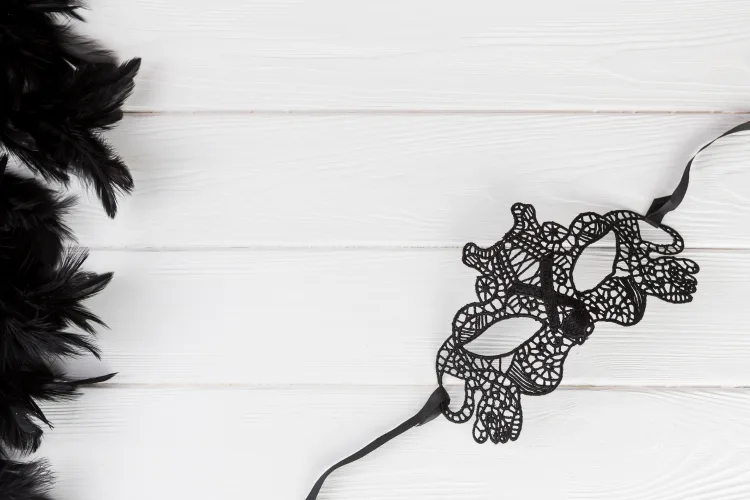If you’ve heard the terms “Daddy Dom” or “DDLG” and are intrigued but unsure what they truly mean, you’re not alone. The dynamic is often misunderstood and hidden behind stereotypes, but at its heart, it’s a beautiful relationship built on trust, care, and mutual fulfillment. It’s a valid and deeply personal connection within the broad world of consensual BDSM and modern relationships.
This guide will provide a clear, non-judgmental explanation of the Daddy Dom/Little Girl dynamic, its core principles, and a roadmap for exploring it with respect and safety.
DDLG Defined: What Does It Actually Mean?
DDLG stands for Daddy Dom / Little Girl. It’s a power exchange relationship dynamic that blends two key elements: a nurturing, protective role from the Dominant partner, and a playful, submissive role from the care-receiving partner.
Crucially, this is a consensual adult relationship. The dynamic has nothing to do with actual children or family roles. Instead, it’s a form of role-play between consenting partners where one partner embodies a childlike persona or headspace, while the other takes on a loving, guiding, and authoritative role. It’s a space where a Little can relax and feel safe, and a Daddy Dom can find purpose in providing that sanctuary.
The Two Hearts of the Dynamic: Understanding the Roles
A DDLG relationship thrives on a clear understanding of the roles each partner plays.
- The Daddy Dom (The Caregiver): The Daddy Dom is a type of Dominant who prioritizes nurturing and protection. Their authority is a form of care. They provide guidance, set gentle rules, and create a structured environment where their Little feels safe and cherished. Their motivation is not control for its own sake, but rather the immense joy and satisfaction they get from watching their partner feel cared for and secure. The authority they hold is a gift willingly given to them by the Little, and it’s rooted in a deep well of trust.
- The Little (The Care-Receiver): The Little is the submissive partner who enjoys being cared for. They often enter a headspace called “little space,” a state of mind where they can let go of adult pressures and responsibilities. In this space, they can be playful, vulnerable, and free-spirited. The spectrum of “littleness” is vast—some might feel like a sassy teenager, while others prefer a more innocent “babygirl” persona. Their motivation is to find comfort, emotional safety, and a release from the stresses of daily life by having a guiding partner they can lean on.
The Foundation: Core Principles of a Healthy DDLG Relationship
Like any healthy relationship, a successful DDLG dynamic is built on a few non-negotiable principles.
- Consent: This is the golden rule. Every action, rule, and dynamic element must be discussed and enthusiastically agreed upon by both partners. Consent is not a one-time conversation; it’s an ongoing dialogue with regular check-ins.
- Trust: The Little places their emotional well-being in the hands of the Daddy Dom, making trust the bedrock of the entire dynamic. It’s what allows the Little to be vulnerable and the Daddy Dom to lead with confidence.
- Communication: Open, honest, and non-judgmental communication is essential. Partners must be able to discuss needs, desires, and especially boundaries (both hard and soft limits) without fear of judgment.
- Respect: The Daddy Dom must respect the Little’s autonomy and limits, and the Little must respect the Daddy Dom’s role and care. The dynamic is one of unequal power, but the two people are of equal worth.
What Does a DDLG Relationship Look Like in Practice?
DDLG relationships are highly personal, but here are some common elements:
- Rules & Rewards: A Daddy Dom might set rules like, “You must drink eight glasses of water a day,” or “Bedtime is at 10 PM on weekdays.” Following these rules might be rewarded with positive reinforcement, praise, a treat, or a new stuffed animal. Gentle, pre-agreed-upon punishments might be used for infractions.
- Activities: This can involve anything from watching cartoons and coloring to using pacifiers, bottles, or stuffies (plush toys). The activities are meant to help the Little feel safe, comforted, and playful.
- Honorifics: Couples often use titles like “Daddy,” “Papa,” or “Sir” for the dominant partner, and “Little one,” “Babygirl,” or “Kitten” for the submissive. These titles help solidify the roles within the dynamic.
Every relationship is unique. Some couples adopt a 24/7 lifestyle, while others engage in the dynamic only during specific scenes or designated “little time.”

Starting Your Journey: A Beginner’s Roadmap to Exploration
If you’re interested in exploring this dynamic, a thoughtful, step-by-step approach is best.
- Step 1: Self-Reflection. Take time to understand what you’re looking for. Are you drawn to the caregiving aspect or the joy of being cared for? What are your needs and desires?
- Step 2: The Conversation. If you’re in a relationship, approach your partner with curiosity and honesty. Frame it as something you’d like to explore together, rather than a demand. If you’re single, look for partners who are open to and knowledgeable about BDSM.
- Step 3: Negotiation. This is the most important step. Clearly discuss your desires, boundaries, and hard limits. A good way to start is by using the “traffic light system”: green for things you’re excited about, yellow for things you’re curious about, and red for things that are off-limits.
- Step 4: Start Slow. You don’t need to jump in with both feet. You could begin by simply having your partner read you a bedtime story or by agreeing to use an honorific in the bedroom. See how it feels and adjust as you go.
- Step 5: Aftercare. After any intense scene or emotional experience, take time for aftercare. This involves cuddling, talking, and reassuring each other that you are safe and loved. Aftercare helps to reconnect as equals and process the emotions of the scene.
Addressing Your Concerns: Common DDLG Myths Debunked (FAQ)
- Myth: This is weird or wrong.
- Fact: This is a consensual, loving relationship style between adults. It’s no more “weird” than any other kink or relationship dynamic that works for the people in it.
- Myth: A Little has no say or power.
- Fact: The Little holds ultimate power through their consent. They can say no at any time, and their limits are respected as sacrosanct. The power in DDLG is given, not taken.
- Myth: This is just about age play or regression.
- Fact: While age play and regression are often part of it, DDLG is primarily a power exchange dynamic. Many DDLG relationships focus more on the caregiving and authority aspects than on explicit age play.
Building a Relationship Based on Trust and Care
The DDLG dynamic, at its best, is a profoundly trusting and rewarding relationship that offers unique forms of emotional support and connection. By prioritizing safety, communication, and mutual respect, you can build a connection that is fulfilling, affirming, and deeply loving.
Ready to learn more about building healthy, alternative relationships? Explore more guides on DatingAdviceOnline.com for expert advice on communication, consent, and creating the connection you deserve.


